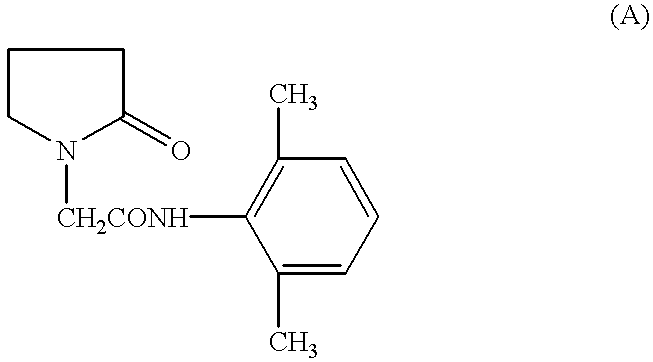Method for treating neurodegeneration
a neurodegeneration and neurodegeneration technology, applied in the field of neurodegeneration treatment, can solve the problems of psychoiatric symptoms and cognitive impairment, negatively affecting both the patient and the caregiver, and achieve the effect of improving the quality of life and reducing the risk of neurodegeneration
- Summary
- Abstract
- Description
- Claims
- Application Information
AI Technical Summary
Benefits of technology
Problems solved by technology
Method used
Image
Examples
Embodiment Construction
Effect of Nefiracetam on Spatial Learning of Rats with Cerebral Embolism
[0034] In male Wistar rats weighing 190-220 g a total of 700 microspheres (48 .mu.m in diameter) were injected into the right common carotid artery of each animal, whereby a quasi-immediate embolism occurs. The embolized animals were randomly divided into 2 groups, each of 13 animals with same neurological deficit, designated as "Control" (embolism plus Vehicle), or "Nefiracetam" (embolism plus nefiracetam 10 mg / kg / day). In addition, a group of 13 "Normal (Sham)" non-embolized animals were used. The administration of nefiracetam or of its vehicle started within the same day of embolization and treatment lasted 9 days. Seven days after embolization, the embolized rats were submitted to a watermaze test, said watermaze being adapted from the Morris water task. The time taken to find the platform (latency) was determined. If a rat failed to find the platform within 180 seconds, the trial was terminated and the rat ...
PUM
| Property | Measurement | Unit |
|---|---|---|
| diameter | aaaaa | aaaaa |
| physical | aaaaa | aaaaa |
| survival time | aaaaa | aaaaa |
Abstract
Description
Claims
Application Information
 Login to View More
Login to View More - R&D
- Intellectual Property
- Life Sciences
- Materials
- Tech Scout
- Unparalleled Data Quality
- Higher Quality Content
- 60% Fewer Hallucinations
Browse by: Latest US Patents, China's latest patents, Technical Efficacy Thesaurus, Application Domain, Technology Topic, Popular Technical Reports.
© 2025 PatSnap. All rights reserved.Legal|Privacy policy|Modern Slavery Act Transparency Statement|Sitemap|About US| Contact US: help@patsnap.com

